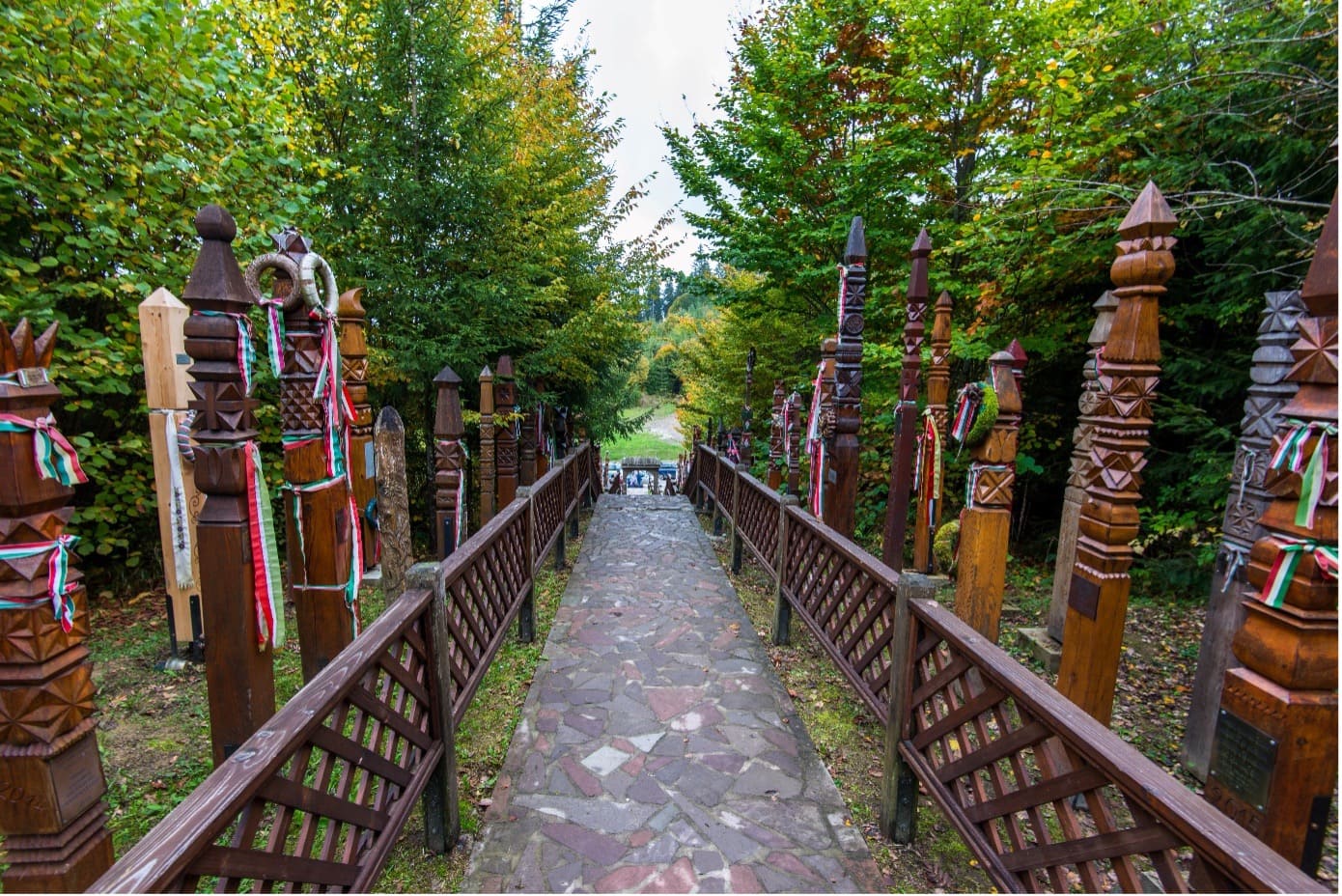After dedicating our previous article to the relationship between Hungary and Hungarian ethnic minorities in the East Central European region, in this article, we are reviewing Hungarian minority parties in Slovakia and Romania.
The Democratic Union of Hungarians in Romania (RMDSZ) was established in 1989 to represent the Hungarian minority in Romania. Right after its foundation the party faced great challenges due to the ethnic clashes in Târgu Mureș (Marosvásárhely). Târgu Mureș is a historic Hungarian town in Transylvania, which is an important political and cultural centre of the Hungarian minority living in Romania. In the 1990s, the town and nearby villages were ethnically mixed, inhabited by Hungarians and Romanians in roughly equal shares. In 1990, during the so-called ‘Black March’, violent ethnic clashes erupted in the town against the Hungarian minority. The riots left five dead (three Hungarians and two Romanians) and around three hundred injured. Although both sides were involved in the violence, only Hungarians were convicted for violent crimes[1].
Since the Romanian government at the time, the National Salvation Front, was unwilling to help the Hungarian minority during these clashes, RMDSZ revised its initially moderate policies and started to demand autonomy for the Hungarian minority. It was a controversial move, since the Romanian constitution, which was recently accepted, ruled out the possibility of autonomy for minorities[2]. Unsuccessful in its autonomy demand, RMDSZ’s cause got another significant blow in 1995 when a new law was accepted on education, restricting minority schooling, and the use of minority languages in classrooms.
RMDSZ could step up for the protection of the Hungarian minority more efficiently, while the government could get some plus points on its EU membership application
The tides changed in favour of RMDSZ in 1996 when they were included in a centre-right coalition government. RMDSZ vowed to give up its autonomy claims, in exchange for more freedom in minority education and language use. The situation seemed to be a win-win—RMDSZ could step up for the protection of the Hungarian minority more efficiently, while the government could get some plus points on its EU membership application—part of the accession criteria was to demonstrate good relations between Romania and its Hungarian minority. Unfortunately, history proved RMDSZ’s participation in the coalition unsuccessful – the legislation grating the use of Hungarian in public administration was blocked, and another legislation, which was supposed to grant the use of the Hungarian language in schools, was not implemented (albeit legally accepted).
From 2000, RMDSZ continued to work with the new, centre-left Romanian government, however, most of their policies were blocked again. The failures and the Romanian government’s constant blocking of RMDSZ’s demands led the party to split. However, as neither of the new alternatives to Hungarian minority representation succeeded, RMDSZ maintained its prominent position in the Romanian political life (only the Hungarian National Council of Transylvania (CNMT) could claim a relative success with its leader, László Tőkés becoming an MEP as an independent). From 2004, RMDSZ again took part in the Romanian coalition government, with its main success being retaining the use of Hungarian language in the public administration in those regions where the share of Hungarian minority dropped below 20 per cent.
In subsequent years, RMDSZ managed to establish a Hungarian faculty at Babeș-Bolyai University, which was a goal of the party for many years. It also managed to secure infrastructure investments into Hungarian inhabited areas of Romania. Since 2020, RMDSZ is again part of the Romanian coalition government, currently, the biggest challenge the party is facing is to enforce the right of the Hungarian minority in Romania to be able to use their mother language in territories where they reach 20 per cent of the population. Officially, in these regions Hungarians are granted the right to use Hungarian in the administration and have minority schools, however, in reality there are problems with the implementation of this law. On average only those territories grant these rights where Hungarians constitute at least 50 per cent of the population[3].
In Slovakia, the Hungarian Coalition (SMK) was established in 1998, building on the cooperation of a number of Hungarian ethnic parties. Just like RMDSZ SMK also pursued autonomy for the Hungarian minority living in Southern Slovakia, although this claim is made almost impossible by an administrative act from 1996. In the 1990s, the rights of the Slovakian Hungarian minority were severely curved. In 1995, the Slovakian language was established as the exclusive national language of the country and in 1991 minority education was also restricted.
The situation of the Hungarian minority in Slovakia changed for the better when Vladimír Mečiar lost to the opposition in 1998
The situation of the Hungarian minority in Slovakia changed for the better when Vladimír Mečiar lost to the opposition in 1998 (ending some authoritarian tendencies in the country) – and the SMK became part of the coalition government in Slovakia. Just like in Romania, the inclusion of the Hungarian minority in the coalition was important for Slovakia to convince the EU that the country is committed to democratic, Western values so that it can enter the block and meet the accession criteria. In exchange for entering the coalition, SMK was asked to roll back on its most radical policies – it stopped pursuing an autonomy, and the foundation of a Hungarian university. In return, a new language law in 1999 granted Slovakian Hungarians the right to minority education in territories where they constitute at least 20 per cent of the population.
In 2002, the SMK was once again included in the government, during the mandate its most significant achievement was establishing an independent Hungarian university in the city of Komarno. In 2006, the SMK was not included in the government, and it started to be consumed by internal disputes and disagreements. Due to disagreements on whether the party should seek to break the taboo in Slovakian politics over the Beneš decrees the SMK was split, and in 2009 the Most-Híd Party was established. The Beneš decrees were accepted after the end of the Second World War and they claim the collective guilt of Hungarians (and Germans) for the events and war crimes of the war. As a result of the degrees Hungarians in Slovakia suffered enormously, they were discriminated, had their private properties taken away, and were forced to leave their homes. In 2007 the Slovakian parliament reaffirmed the sanctity of the Beneš decrees – albeit adding that it wishes to maintain good relations with its neighbour and that it disapproves of any discriminatory laws against its minorities[4].
The Most-Híd was established in the name of cooperation between Slovaks and Hungarians. They pursue the multicultural nature of Slovakia to be acknowledged, and to allow territories where 10 per cent of the population is Hungarian to use Hungarian in the administration and in schools. With its moderate voice seeking reconciliation, Most-Híd managed to achieve great successes over the last couple of years. In 2010, Most-Híd entered into coalition with the centre-right Slovakian government. In 2014, it managed to send one representative to the European Parliament, then it once again became part of the Slovakian coalition in 2016. On the 2020 elections unfortunately all Hungarian minority parties had failed, so they decided to revise their strategy and cooperate. In October 2021, both SMK and Most-Híd were dissolved and merged into Alliance which is now the official voice of the Hungarian minority in Slovakia.
[1] Bálint Ablonczy, ‘Xenofóbiás magömlés kéjében vonagló vitézek – 30 éve kezdődött a marosvásárhelyi fekete március’, valaszonline.hu, 2020, https://www.valaszonline.hu/2020/03/16/marosvasarhely-fekete-marcius-30-evfordulo/, accessed 5 Febr. 2022.
[2] Daniel Bochsler, Edina Szöcsik, ‘Building inter-ethnic bridges or promoting ethno-territorial demarcation lines? – Hungarian minority parties in competition’, The Journal of Nationalism and Ethnicity, 41/5 (2013), 767.
[3] Beáta Huszka, ‘Romania’s ‘Hungarian problem’: A minority caught between integration and self-segregation’, blogs.lse, 2020, https://blogs.lse.ac.uk/europpblog/2021/11/24/romanias-hungarian-problem-a-minority-caught-between-integration-and-self-segregation/, accessed 5 Febr. 2022.
[4] Kilenc éve hagyta jóvá a parlament a Beneš-dekrétumok megerősítését, hírek.sk, 2016, https://www.hirek.sk/belfold/kilenc-eve-hagyta-jova-a-parlament-a-benes-dekretumok-megerositeset, accessed 5 Febr. 2022.








